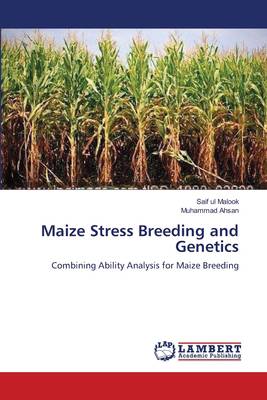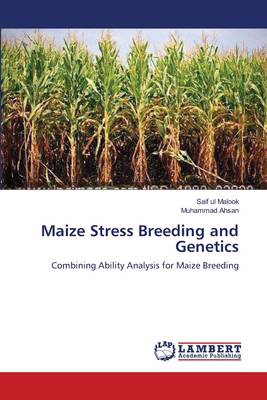
Je cadeautjes zeker op tijd in huis hebben voor de feestdagen? Kom langs in onze winkels en vind het perfecte geschenk!
- Afhalen na 1 uur in een winkel met voorraad
- Gratis thuislevering in België vanaf € 30
- Ruim aanbod met 7 miljoen producten
Je cadeautjes zeker op tijd in huis hebben voor de feestdagen? Kom langs in onze winkels en vind het perfecte geschenk!
- Afhalen na 1 uur in een winkel met voorraad
- Gratis thuislevering in België vanaf € 30
- Ruim aanbod met 7 miljoen producten
Zoeken
Maize Stress Breeding and Genetics
Combining Ability Analysis for Maize Breeding
Saif ul Malook, Muhammad Ahsan
Paperback | Engels
€ 60,95
+ 121 punten
Omschrijving
Thirty inbreeding lines of Zea mays were screened in a glasshouse. Eight best performing lines were selected based on nine traits screened to cross with testers. The resulting F1 hybrids were screened in the field for their performance. Root and shoot length ratio, fresh shoot weight, dry root weight, and dry shoot weight were the most important traits to be used as criteria in selecting drought tolerance maize genotypes. Principal component analysis suggested that K55TMS, OH3A54, W187R, A556, WA3748, WM13RA and A545 performed the best under normal and drought conditions. High heritability and genetic advance was found for plant height, 100-grain weight, grain rows per plant and grain yield per plant, suggesting that selection of high yielding maize genotypes is possible through this approach. High specific combining ability of W64SP, A495, A509 and A50-2 suggested pre-screening of inbred lines that the inbred lines may be an efficient approach to develop higher yielding maize hybrids through heterosis breeding under drought.
Specificaties
Betrokkenen
- Auteur(s):
- Uitgeverij:
Inhoud
- Aantal bladzijden:
- 120
- Taal:
- Engels
Eigenschappen
- Productcode (EAN):
- 9783659633478
- Verschijningsdatum:
- 11/11/2014
- Uitvoering:
- Paperback
- Afmetingen:
- 150 mm x 220 mm
- Gewicht:
- 186 g

Alleen bij Standaard Boekhandel
+ 121 punten op je klantenkaart van Standaard Boekhandel
Beoordelingen
We publiceren alleen reviews die voldoen aan de voorwaarden voor reviews. Bekijk onze voorwaarden voor reviews.









